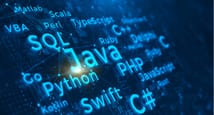- What is Networking
- Advantages & Disadvantages
- Network Characteristics
- Network Models (Peer-to-Peer and Client-and-Server)
- Network Types (LAN,WAN,MAN,PAN)
- Network Topologies (Bus, Star, Ring)
- Internet connection (DSL, Cable, Serial Link)
- Network Media
Certified Basic Network Support Professional
Enrol in the Certified Basic Network Support Professional programme by VSkills to learn about the useful features and ...Read more
Online
₹ 3499
Quick Facts
| particular | details | |||
|---|---|---|---|---|
|
Medium of instructions
English
|
Mode of learning
Self study
|
Mode of Delivery
Video and Text Based
|
Course overview
The Certified Basic Network Support Professional course by V Skills covers the daily support of computer networks and networking devices such as hubs and switches. Candidates will learn the basic concepts of a computer network, networking media (both wireless and wired), networking devices, management, configuration, and also the troubleshooting of switches. These skills are highly sought-after in the IT infrastructure companies today.
Moreover, the curriculum for the V Skills Certified Basic Network Support Professional course aims to make students more than familiar with networks and skilled at taking advantage of their features effectively. It also teaches them to complete day to day tasks quickly across various platforms. These skills are highly sought after by employers and thus, the course is a great way to improve career prospects.
Additionally, the candidates will also receive a government-recognized certification and a ‘VSkills certified’ tag in their CVs on professional platforms such as monster.com and shine.com to increase their chances of getting employed.
The highlights
- Government certificate
- Lifetime validity of the certificate
- Lifelong access to learning material
- Free practice tests
- Online examination
- Vskills certified label on job portals
Program offerings
- Government certification
- Online exam
- Hard copy of study material
- Lifelong e-learning access
- Interview questions preparation
- Sample chapters
- Practice tests
- Access to job centre
Course and certificate fees
Fees information
- The total fee for the Certified Basic Network Support Professional course consists of the tuition fee.
Certified Basic Network Support Professional course fee structure
Course Name | Fee Range |
Certified Basic Network Support Professional | Rs. 3,499 |
certificate availability
Yes
certificate providing authority
Vskills
Who it is for
The V Skills CertifiedBasic Network Support Professional course is meant for:
- Students
- Hardware engineers
- Networking engineers
- Basic network support professionals
Eligibility criteria
There is no minimum eligibility criterion or qualification required to take up this course. Individuals like working professionals or even students considering a career in the field can pursue the course.
Certificate Qualifying Details
Also, candidates must take an online exam to pass the certification course. They can schedule the exam in the exam calendar as it is held on a monthly basis.
What you will learn
The Certified Basic Network Support Professional course by V Skills equips candidates with the core concepts of computer networking. After completing the course, students will learn:
- Fundamentals of computer networking
- Introduction to the networking models and concepts
- In-depth understanding of LAN and WAN networking
- Internet protocols and network security
The syllabus
Introduction to Networking Concepts
Networking Models
- History
- Layered Network Model
- Layering Concepts and Benefits
- TCP/IP Protocol Architecture
- RFC
- Application, Transport, Internet and Network Access Layer
- Devices at different layers
- Data Encapsulation
- The OSI Reference Model
- OSI Layers and Their Functions
- Comparing OSI and TCP/IP
LAN
- Ethernet History
- Ethernet Types (10/100/1000 Base T,TX, SX/LX)
- 10BASE2 and 10BASE5
- Repeaters
- 10BASE-T with Hubs
- UTP Cabling, UTP Cables and RJ-45 Connectors
- UTP Cabling Pin-outs
- CSMA/CD
- Using Switches and Their Advantages
- Ethernet Data-Link Protocols and Frame
- Wiring Ethernet Cables
- Ethernet Addressing, Framing and Error Detection
- LAN Types (Ethernet, Token Ring, FDDI)
WAN
- WAN Basics (DCE,DTE, CSU/DSU, CPE, Demarc, DS0)
- WAN Technologies (Leased Lines, Circuit & Packet Switching & Cell Relay)
- HDLC (High Level Data link Control)
- PPP (Point-to-Point Protocol)
- Frame Relay
- ATM (Asynchronous Transfer Mode)
- WAN Cabling Standards
- Clock Rates, Synchronization, DCE, and DTE
- OSI Layer for Point-to-Point WANs
Internet Protocol
- Network Layer Functions
- IP Packets
- IP Routing
- Routing Protocols
- IP Addressing
- A, B, and C Classes of Networks
- IP Subnetting
- Host & Router Routing
- ARP, DNS, DHCP & Ping
TCP/IP Transport Layer
- Transport Layer Protocols: TCP and UDP
- Transmission Control Protocol
- Ports & Their Multiplexing
- TCP Error Recovery, Flow Control and Data Segmentation
- TCP Connection Establish and Terminate
- UDP (User Datagram Protocol)
Applications
- TCP/IP Applications, QoS Needs and Impact
- The World Wide Web
- HTTP (Hyper Text Transfer Protocol), HTTPS & SSL
- Universal Resource Locators
- FTP (File Transfer Protocol), Secured FTP
- SMTP, POP3 & IMAP
- Telnet
Network Security
- Sources and Types of Threats
- Firewalls
- Intrusion Detection and Prevention
- Virtual Private Networks (VPN)
LAN Switching
- Ethernet LAN Media and Cable Lengths
- Hubs, Bridges, and Switches
- Forward and Filter Decision Switching
- Learning MAC Addresses & Frames Flooding
- Spanning Tree Protocol
- Collision Domains and Broadcast Domains
- Virtual LANs (VLAN)
LAN Switches
- Switches and LED Switch Status
- Accessing the CLI & Password Security
- User and Enable Modes
- The debug and show Commands
- Configuration Sub-modes and Contexts
- Storing, Copying and Erasing Switch Configuration Files
- Initial Configuration
Ethernet Switch Configuration
- Securing CLI
- Console and vty Settings
- logging synchronous and exec-timeout Commands
- IP Address & Interfaces Configuring
- Port Security
- VLAN Configuration
- Securing Unused Interfaces
Switch Troubleshooting
- Cisco Discovery Protocol
- Layer and Interface Status
- Interface Speed and Duplex Issues
- Analyzing the Forwarding Path
- Port Security and Filtering
Wireless LANs
- Wireless LAN Basics
- Wireless LAN Standards & Modes
- Wireless Encoding and Nonoverlapping DSSS Channels
- Wireless Interference, Coverage Area, Speed, and Capacity
- Wireless Media Access (Layer 2)
- Wireless LAN Security (WEP, WPA, IEEE 802.11i, WPA-2 SSID Cloaking and MAC Filtering)
Operating Routers
- Installing Routers & Router Interfaces
- Router CLI & Difference with the Switch CLI
- Interface Status Codes and IP Addresses
- Bandwidth and Clock Rate on Serial Interfaces
- Router Auxiliary (Aux) Port
- Setup Mode, Upgrading and boot process of the IOS
- Configuring the configuration register and the show version command
Routing Protocol Concepts and Configuration
- Connected and Static Routes
- Default Routes and their configuration
- Routing Protocol (IGP & EGP) & algorithms
- Autosummarization and Manual Summarization, Classless and Classful Routing Protocols and Convergence
- Basic concepts, configuring and verifying RIP-2
- Different metrics used and the show ip route command
- Administrative Distance
- Debug command and RIP
Troubleshooting IP Routing
- IP Addressing issues
- Host networking commands of telnet, tracert, ipconfig, arp,netstat and nslookup
WAN Concepts
- WAN Technologies (PSTN, DSL & Cable)
- PSTN and analog modems
- Digital Subscriber Line types
- Cable Internet
- Asynchronous Transfer Mode (ATM)
- Packet and circuit switching
- NAT and PAT
WAN Configuration
- Configuring Point-to-Point WANs, HDLC and PPP
- Internet Access Router: Configuration Steps
- Step & configure IP Connectivity, DHCP and PAT
Admission details
Step 1: Go to the V Skills official website by clicking on this link: https://www.vskills.in/certification/.
Step 2: Locate the ‘Certifications’ option and click on the ‘Hardware and Networking’ category.
Step 3: On the new page, locate the ‘Certified Basic Network Support Professional’ course and click on it. You will now be directed to the course page.
Step 4: Find the ‘Buy Now’ option and click on it.
Step 5: Register on the V Skills website and pay the fees to join the course.
Evaluation process
Students must take note that they have to pass an online exam to qualify for the certificate. Practice tests and questions can be found on the website. The exam duration is only 1 hour and it will consist of 50 questions. Students must score a minimum of 25 to pass the exam. There is no negative marking.
How it helps
The Certified Basic Network Support Professional course aims to provide a comprehensive understanding of computer networking and its various aspects. The course covers a large number of topics and is intended for students who wish to excel in their field.
The V SkillsCertified Basic Network Support Professional course can increase the chances of employment for candidates in a competitive market and also increase their earning potential in existing jobs. Skills related to computer networking and infrastructure are highly sought for government projects and leading companies like TCS, Wipro, HCL, Tech Mahindra, and IBM. Also, students will receive a certificate that is valid for a lifetime and can be added to their profiles on job portals such as Shine.com and Monster.com.
FAQs
For how long will the study material be available?
V Skills provides lifelong access to the study material for V Skills certifications to all students.
What companies can I apply to after completing this course?
On successful completion of the course, candidates will be skilled in the field of basic network support and will get good employment opportunities in companies like TCS, Wipro, HCL, IBM, and Tech Mahindra. Many government projects are also on the lookout for these skills.
Does the course provide any placement assistance?
In addition to the skills and knowledge, candidates will receive a government certificate along with a VSkills certified tag that will be added to their CVs on job portals. This tag will be visible to relevant employers and help them identify our students and raise their chances of getting employed.
Is it necessary to take the online exam?
Yes, the online exam must be taken by the student to receive the certificate. The exam is conducted once a month and students can schedule the exam as per their convenience from the exam calendar.
What is the duration of this course?
In order to get government certification, students must take the online exam within 1 year. However, the e-learning material will be available even later for the students.


 Brochure
Brochure Enquire
Enquire










